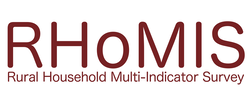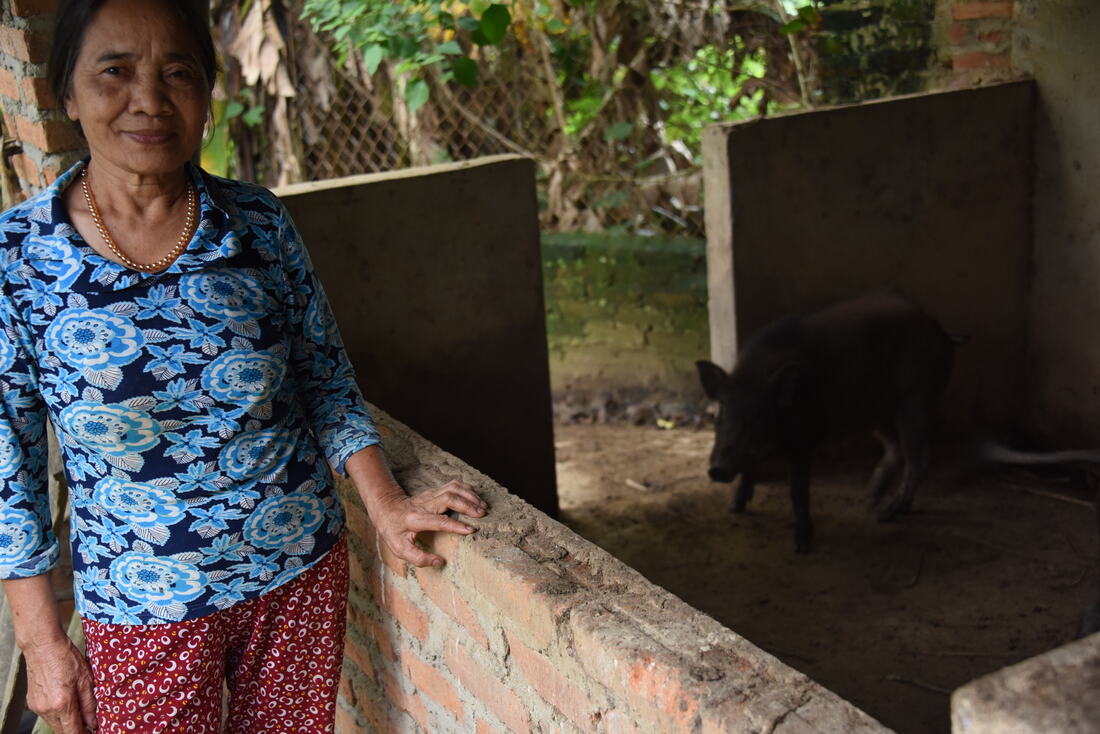|
RHoMIS is being utilised in a nutrition study led by the International Livestock Research Institute (ILRI) and the Thai Nguyen University of Agriculture and Forestry (TNUAF). The study aims to compare diet diversity data collected for the immediate past with data collected from the same household over a 12 month recall period. Thirteen survey rounds will be carried out in the project, of which the full RHoMIS survey tool will be applied at the beginning and at the end of the study while the food dietary diversity module will be applied monthly in 11 re-surveys to assess food and nutrition security in Phu Binh district in Thai Nguyen province. Unlike other projects, due to the multiple survey rounds to be done and limited financial resources, we decided to employ students to carry out the survey rather than professional enumerators. The second- and third- year students of the Department of Veterinary and Livestock Production of TNUAF were targeted given their relevant background, working experience with farmers during compulsory fieldwork courses, and their availability throughout the whole project’s duration. Ten students were recruited with the support from TNUAF’s field coordinators. The study was kicked off with an intensive four-day training for the 10 selected students by ILRI’s Nils Teufel and Thinh Nguyen at TNUAF campus in Thai Nguyen on 22-25 April 2019. The first training day was devoted to the introduction of the RHoMIS Nutrition study, history and components of RHoMIS. The next two days were for going through the whole survey questionnaire, question by question, to help the students become familiar with the survey and including the digital Open Data Kit (ODK) forms. The students were then paired to role-play filling the ODK forms, checking the entries and uploading the completed questionnaires. This gave them a chance to practice the trained skills and identify any possible changes to be made to the survey.
Given this was the first time of working together with students, we were quite impressed with their discipline, diligence and energy. On the first day when we arrived at TNUAF and entered the training room, all students had already gathered there and gave us a warm welcome. Some students shared that they were so excited at being given an opportunity to join the project but also quite shy and hesitant to communicate with the international staff because of their limited English. As the training progressed, the students gradually overcame their shyness and showed their excitement with being involved in the training. They discussed and asked for clarification if anything was unclear. They shared their past experiences, such as helping their parents with farming work or working with other farmers in fieldwork courses to suggest changes to the questionnaires. They also actively practiced what had been trained after each day to better absorb the new knowledge. At the end of each training day, all team members were asked to share their feelings using only one word. We were so happy to hear words such as “happy”, “excited”, “clear”, “confident”, on the last day instead of “worried”, “unclear”, “tired”, “shy”, “vague” as on the first 2 days.
The first survey, from the students’ viewpoint, was quite challenging. They found it difficult and time-consuming to persuade respondents, who were often old and/or disabled with low educational level, to participate in the survey and be willing to share reliable information. The simple but long and detailed questionnaire also challenged the respondents’ patience. Some interviews were disrupted several times because the respondents were interrupted by other personal business. On the first day of the survey, it took up to 2 hours to complete an interview compared to less than 40 minutes as practised in the training and in the field-test. Besides, the students expressed some worries regarding the use of tablets for the survey. Despite being trained carefully and acknowledging the advantages of digital surveys compared to paper ones, some students admitted that “We are scared of carrying such valuable tablets. If they are stolen or accidentally broken, all saved but not-yet uploaded drafts will be lost, and our efforts of the whole day will be nonsense, not to mention our inability to pay back the damage”. Some other challenges during the first survey included the difficulty of reaching households located in remote areas with no road access, especially during rainy days, or that households were not at home during the appointed time leading students to visit several times. However, during the monthly re-surveys, every challenge mentioned above has been gradually overcome. The questionnaire is much shorter, focusing on the nutrition module only, thus each interview takes less than 15 minutes. Moreover, the students have become familiar with the households and are even considered as family members. The respondents are now quite open to share information either face-to-face or over the phone. In general, the dietary patterns of the interviewed households are quite similar and have not changed much as observed during the first two survey rounds. Few changes were reported during the third and fourth round which took place during the outbreak of African swine fever (ASF) in June 2019. Most of the surveyed households had not been raising pigs but had frequently consumed pork before the ASF outbreak. When the disease occurred, many households decided to reduce or remove pork from their daily diet and to replace it with other meat types such as fish, beef, chicken, etc. These changes in diet will be taken into consideration in upcoming survey rounds. The survey will continue with 9 more rounds until April 2020. Despite having only gone through one third of the whole research process, the survey is likely to help develop the capacity of the engaged people, especially the TNUAF’s researchers and students. Through the project, they have understood how a survey is organised, acquired necessary skills for effective interviews, and practice using the digital devices. These experiences will definitely be helpful for their future careers. Editor's note: The RHoMIS team is grateful for this detailed insight into the research being conducted in Vietnam. We look forward to seeing how the project continues and the valuable data that is collected over the next nine months.
0 Comments
Your comment will be posted after it is approved.
Leave a Reply. |
RHoMIS BlogThe RHoMIS blog is written by a community of practice. The COP is made up of RHoMIS users and creators from across the world. Here we share their stories of how RHoMIS is helping to record and analyse household data. Archives
May 2020
Categories
All
|




 RSS Feed
RSS Feed